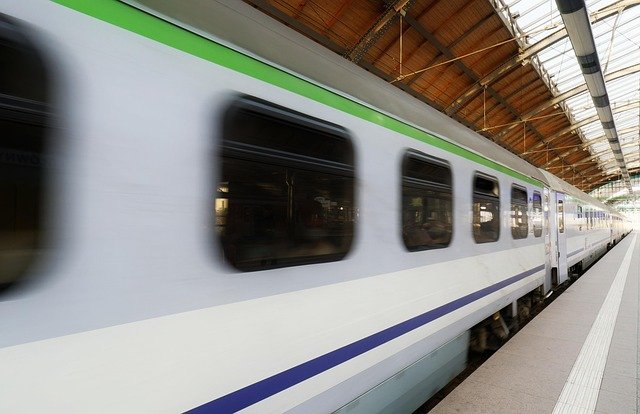Environmental trade-offs when selecting airport access methods
Choosing how to get to an airport affects more than arrival time: it influences energy use, emissions, accessibility, and the resilience of local transit systems. This article examines common access methods like shuttles, trains, ride-hailing, and public transit, and outlines practical trade-offs for planning an itinerary with sustainability in mind.

Travel choices for getting to an airport balance convenience against environmental impacts, often in ways that are not obvious. A direct car ride or ride-hail can shorten door-to-door time but may raise per-passenger emissions compared with a full public transit vehicle. Shared shuttles, regional rail links, and airport express services vary in energy intensity, scheduling reliability, and accessibility. Considering itinerary constraints, booking windows, and local service availability helps travelers and planners reduce emissions while meeting timing and accessibility needs.
Airport access and itinerary planning
Selecting an airport access method should start with your itinerary and scheduling needs. Time-critical flights may push travelers toward private rides or express trains, while flexible schedules can make transit or shared shuttles viable. Consider connection times, baggage handling, and the predictability of service: scheduled train services often run on fixed timetables, while shuttle and ride-hail availability depends on booking and real-time demand. Factoring in transit frequency and expected delays helps weigh environmental trade-offs against reliability.
Shuttle options and emissions
Shuttles range from private vans to scheduled airport coaches. Shared shuttles distribute emissions across multiple passengers, lowering per-person carbon intensity compared with single-occupancy cars when buses fill seats. However, underutilized shuttle routes with many detours can increase fuel consumption per passenger. Electric or low-emission shuttle fleets reduce lifecycle emissions but depend on local charging infrastructure and vehicle sourcing. When evaluating shuttles, check vehicle type, typical occupancy, and routing to estimate environmental impact.
Train travel as a sustainable ride
Trains frequently offer lower emissions per passenger-kilometer, especially on electrified lines powered by low-carbon grids. Airport rail links and regional services can handle high passenger volumes with consistent schedules, improving predictability for booking and commute planning. For medium to long distances, rail combined with local transit often produces fewer emissions than car or ride-hail options. Accessibility at stations, luggage accommodations, and first/last-mile connections influence whether train travel is practical for a given itinerary.
Transit scheduling and commute patterns
Public transit systems—buses, trams, metro lines—play a key role in reducing aggregate emissions when services are frequent and well-timed. Transit scheduling affects how appealing systems are to travelers: long waits or unreliable services discourage use, pushing some toward private rides. Peak commute patterns also influence emissions; off-peak travel may mean emptier vehicles with higher per-passenger emissions. Coordinating flight schedules with reliable transit options, and using integrated booking where available, can improve both convenience and sustainability.
Ride-hailing, booking, and fare effects
Ride-hailing platforms provide flexible door-to-door rides and integrative booking options but often increase vehicle miles traveled due to deadheading (drivers moving without passengers) and dispersed pickup/drop-off patterns. Pricing and fare structures influence mode choice: surge pricing or high airport drop-off fees can make ride-hailing costly and potentially incentivize pooled rides or transit. Pooled ride options reduce per-passenger emissions but depend on matching efficiency and acceptable detours within an itinerary.
Cost, fare, and provider comparison
Real-world cost data can inform environmental choices because price often affects mode selection. Below is a concise comparison of common airport access services, representative providers, and typical one-way cost estimates for common urban airport journeys. These figures are estimates and vary by city, time, and booking method.
| Product/Service | Provider | Cost Estimation |
|---|---|---|
| Airport rail link + local subway | AirTrain/MTA (NYC example) | Around $11 total (AirTrain $8.25 + subway $2.75) |
| Airport express train | Heathrow Express (London example) | ~£25 one-way standard fare (varies with advance booking) |
| Regional metro to airport | BART (San Francisco Bay Area example) | Approximately $9–$10 one-way (varies by origin station) |
| Ride-hailing (single) | Uber/Lyft | Typically $30–$120 depending on distance and surge pricing |
| Shared airport shuttle | Local providers (e.g., GO Airport Shuttle) | Typically $15–$40 per person depending on route and demand |
Prices, rates, or cost estimates mentioned in this article are based on the latest available information but may change over time. Independent research is advised before making financial decisions.
Conclusion
Choosing how to access an airport involves trade-offs among emissions, scheduling, accessibility, and cost. Trains and high-capacity transit generally offer lower per-passenger emissions when services are frequent and well-connected to your itinerary. Shared shuttles and pooled ride options can reduce environmental impact versus single-occupancy rides if routing is efficient. Ride-hailing and private cars provide flexibility and direct routing at the potential cost of higher emissions. Evaluating scheduling reliability, booking options, fare differences, and accessibility features helps travelers select a mode that aligns with both timing needs and sustainability goals.





